6. Experimenting with 3D printing – tutorial based ukulele
Another way of taking the first steps in 3D design and printing are the video tutorials. They can be very helpful, especially when you want to start using a programme like Blender, which is more complicated than ThinkerCAD. A good example of a model, which is quite complicated, but also possible to create a beginner is, for instance, ukulele guitar. Of course together with this tutorial: https://www.youtube.com/watch?v=UKxxXzSr5vM
And here there’s photo story showing the steps of constructing the ukulele guitar, where all, even the smallest elements were designed from the scratch and connected in one instrument.
1. The body of the ukulele:

Image 6.1
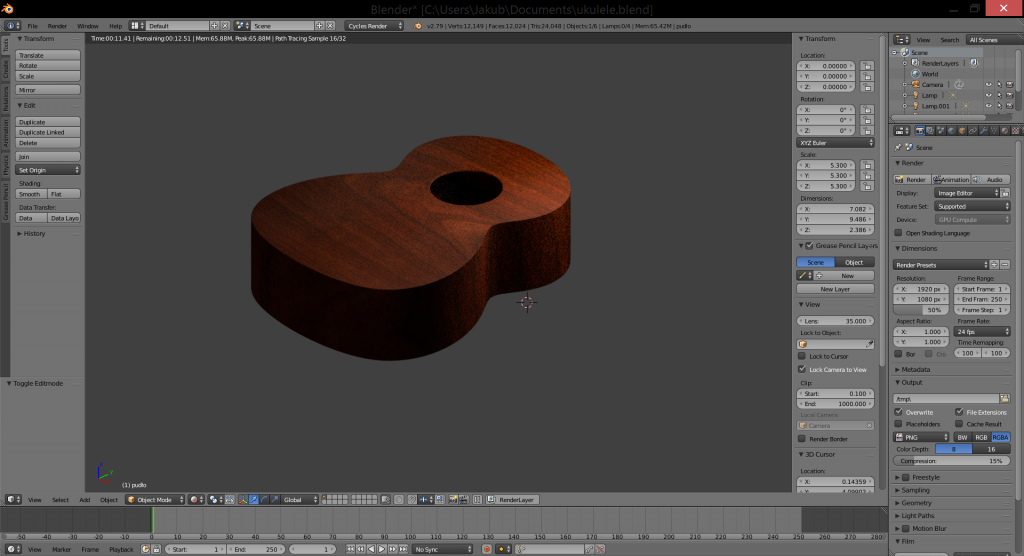
Image 6.2
2. The saddle:
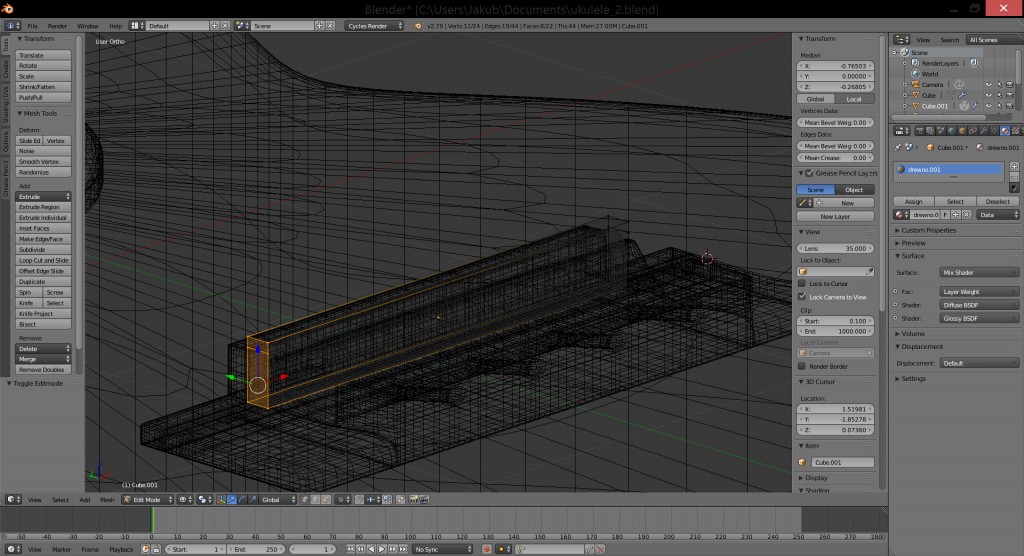
Image 6.3
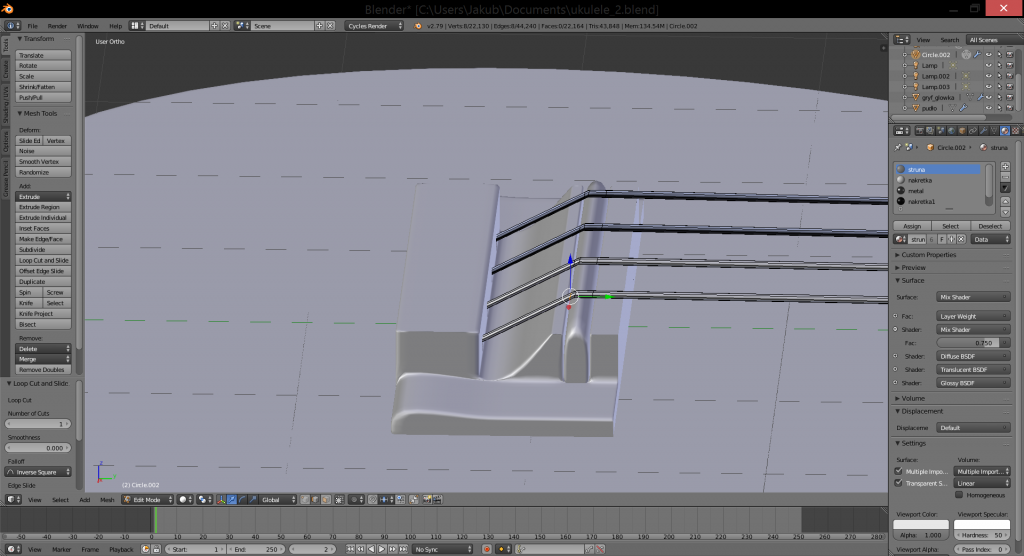
Image 6.4
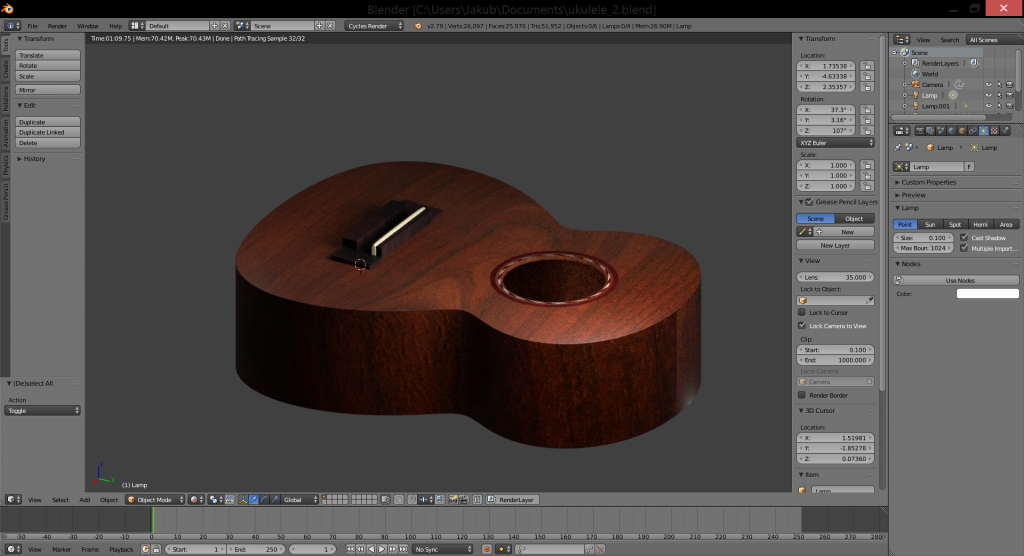
Image 6.5
3. The tuners:
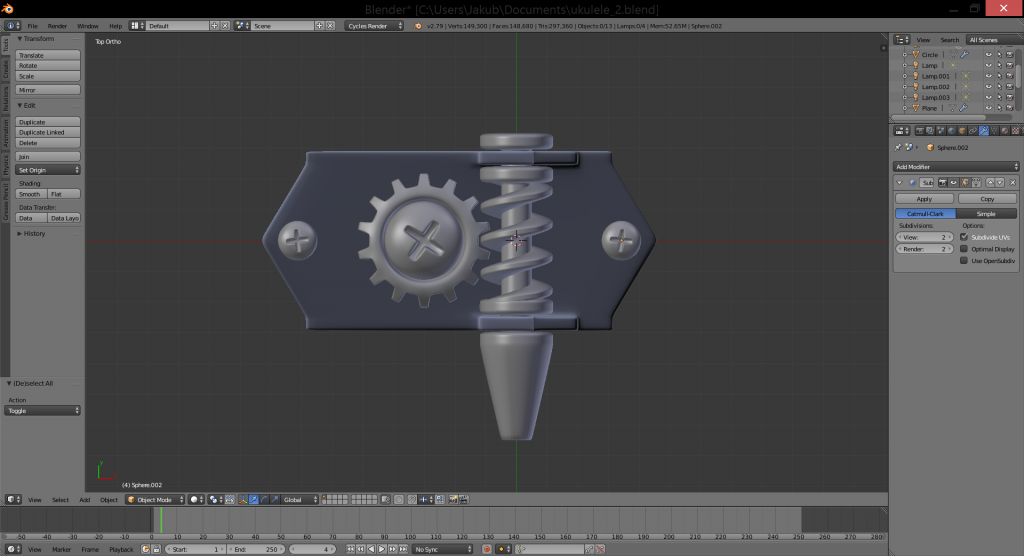
Image 6.6
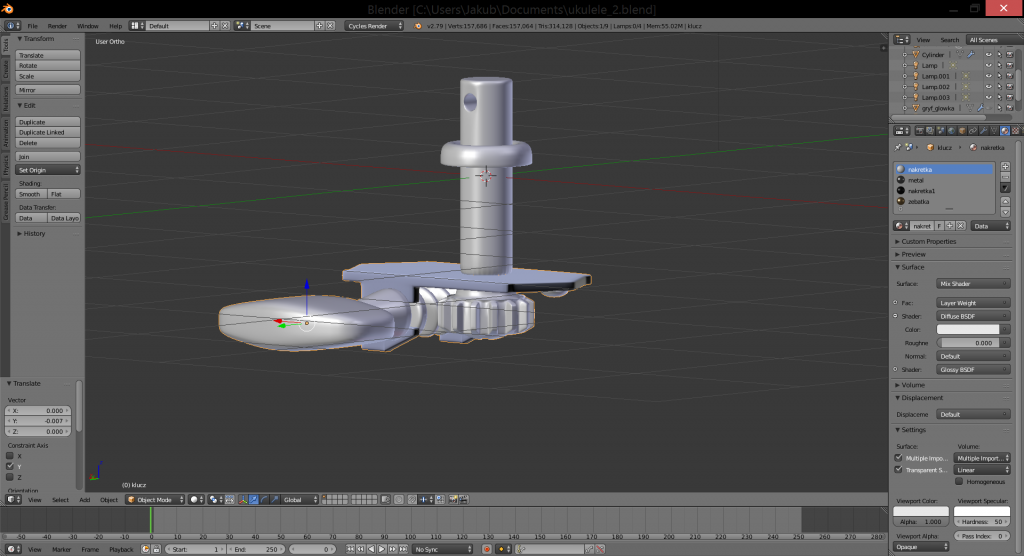
Image 6.7
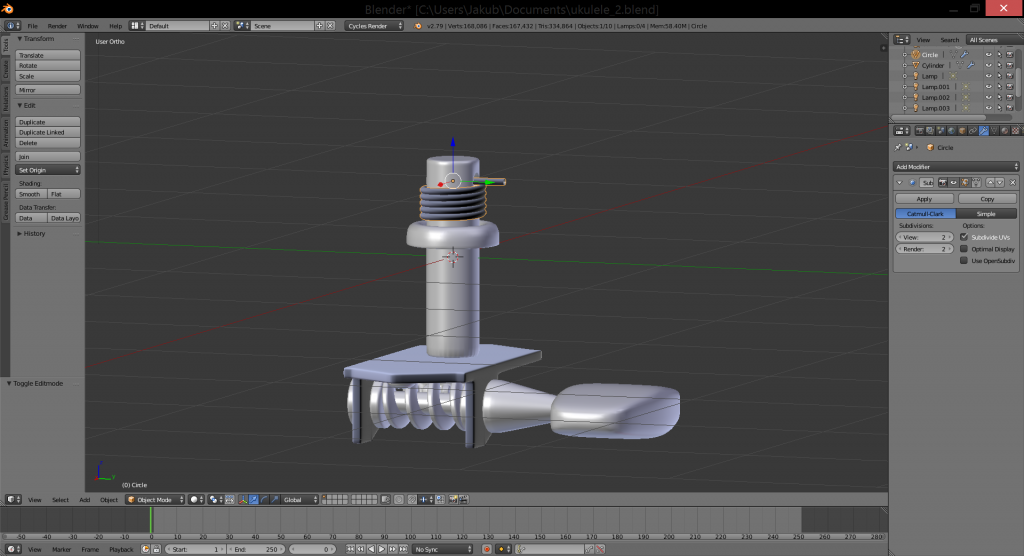
Image 6.8
4. The neck:

Image 6.9
5. Connecting all the parts together:

Image 6.10
6. Rendering example:

Image 6.11
7. The final design:
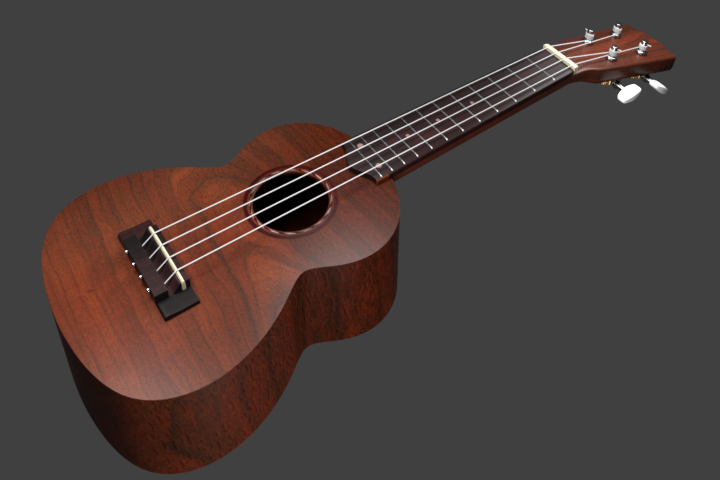
Image 6.12
An interesting part of this process is attempt of printing this model in a small scale. Don’t be surprised when you achieve something like this:
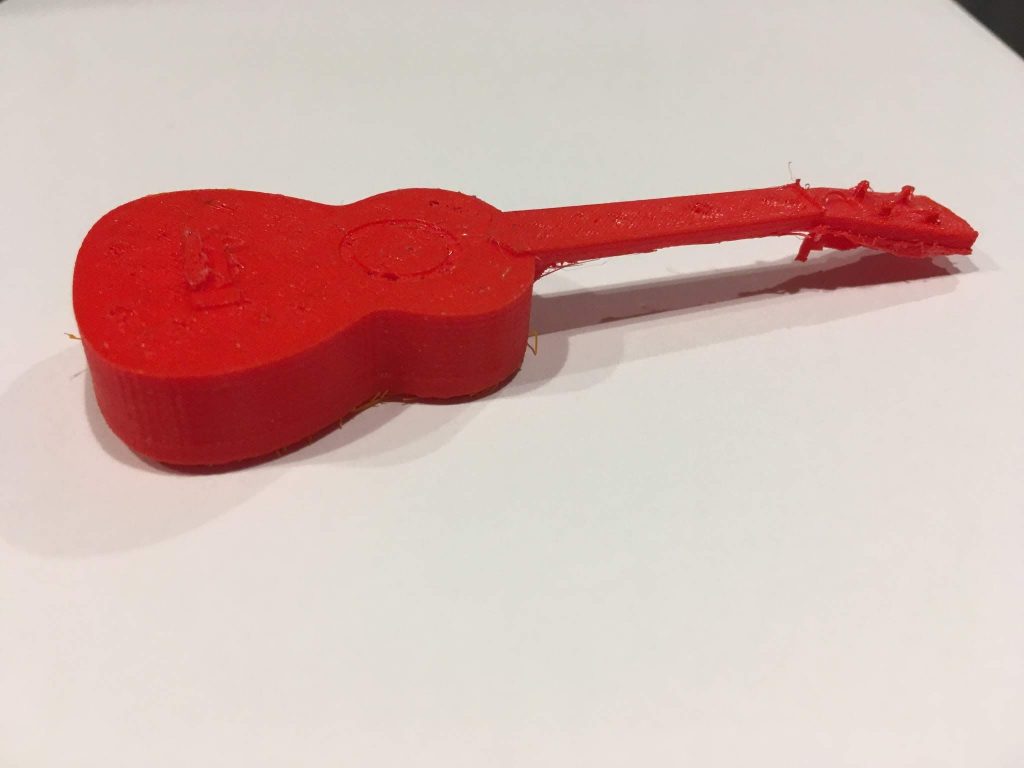
Image 6.13
What happened? Why the printout looks so bad if we have such an excellent project?
The answer is simple: In this particular case, the design wasn’t meant for printing. We focused on details and colours which are important for virtual 3D objects, and only or mainly for them. This is a different situation than the one when your plan from the beginning is printing the object.
To do so, you always have to have on mind how (on which kind of printer) you want to print the object, what size will it have and what material will be used for printing. These elements are crucial in the 3D printing process and have to always considered while designing the object for printing.
In such a case, you don’t have to devote your time for rendering for example, but rather focus on all dimensions and proportions of a potential printout. Here the thickness of the object’s walls will be more important than the surface’s colour, etc.
Summarising: It is extremely useful to know from the beginning the purpose of the work and its desired final result. This will help you to choose the right path.
